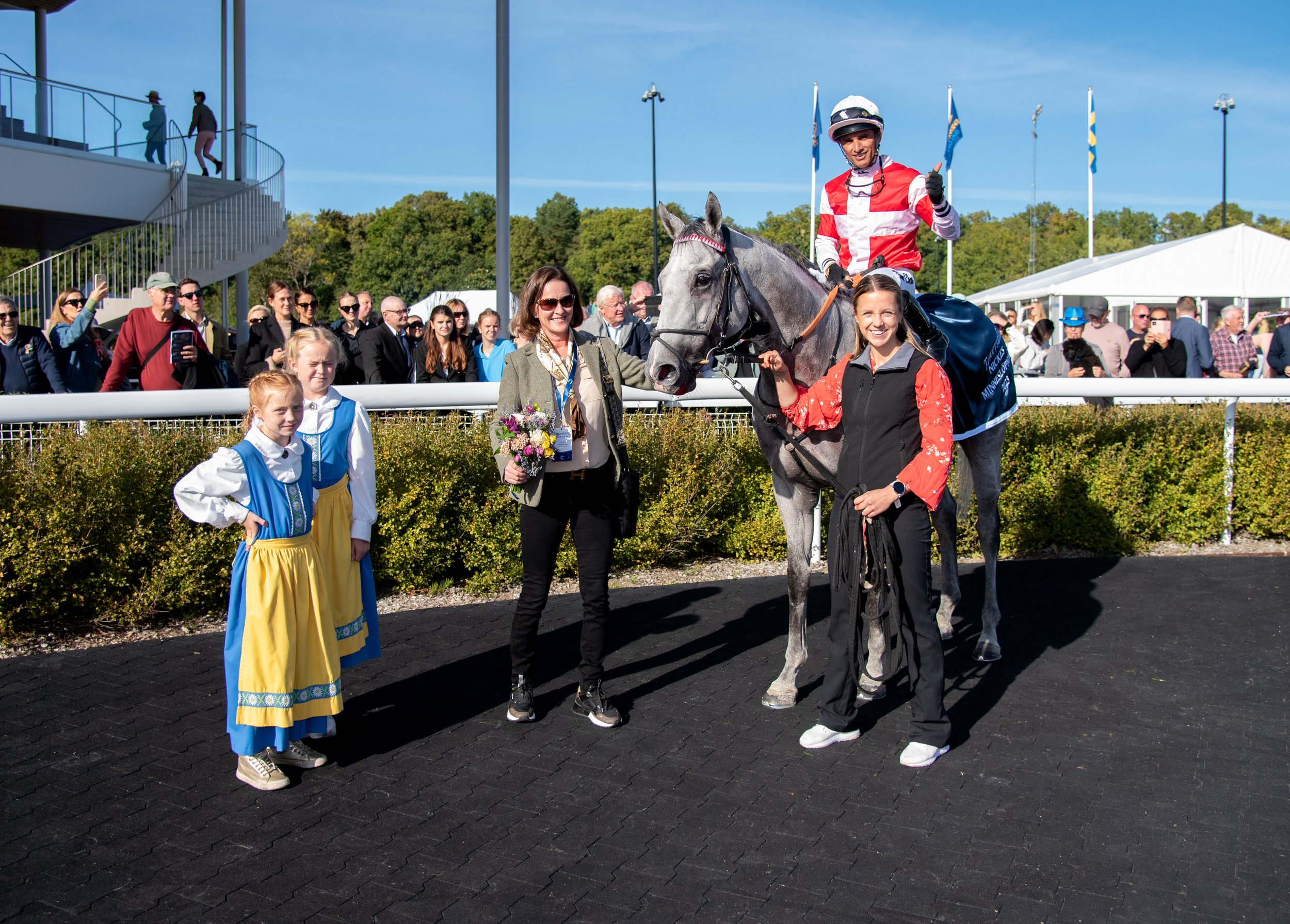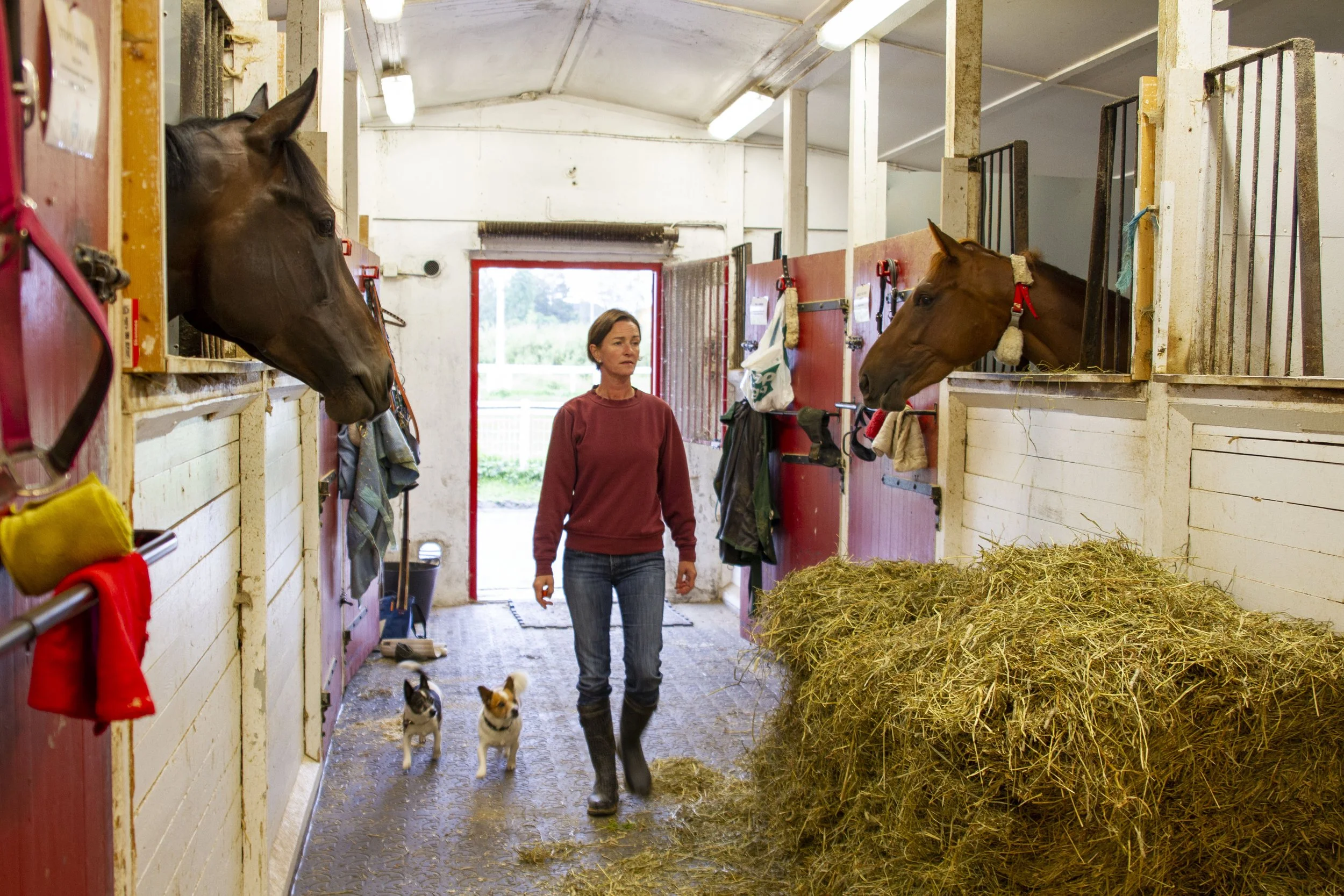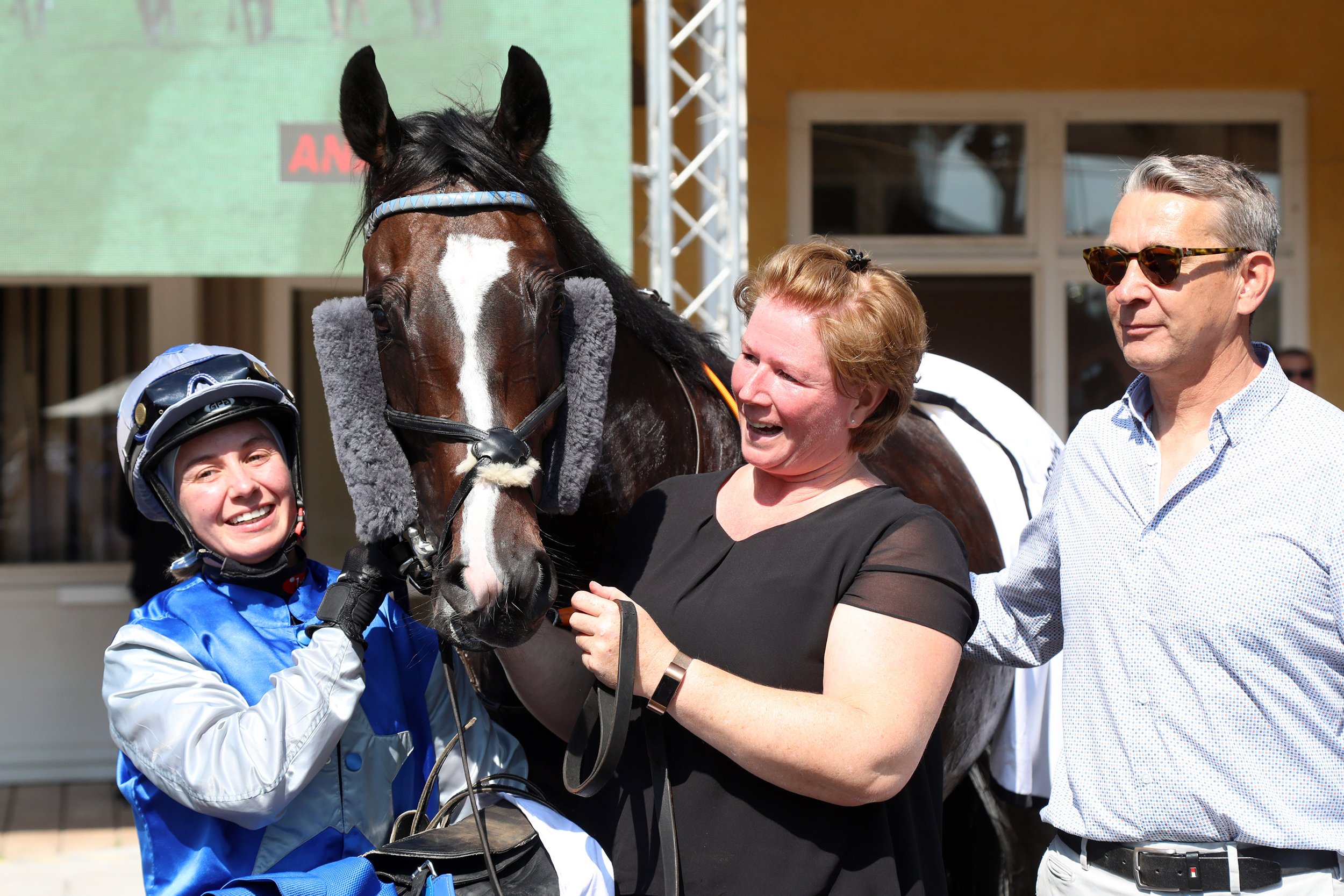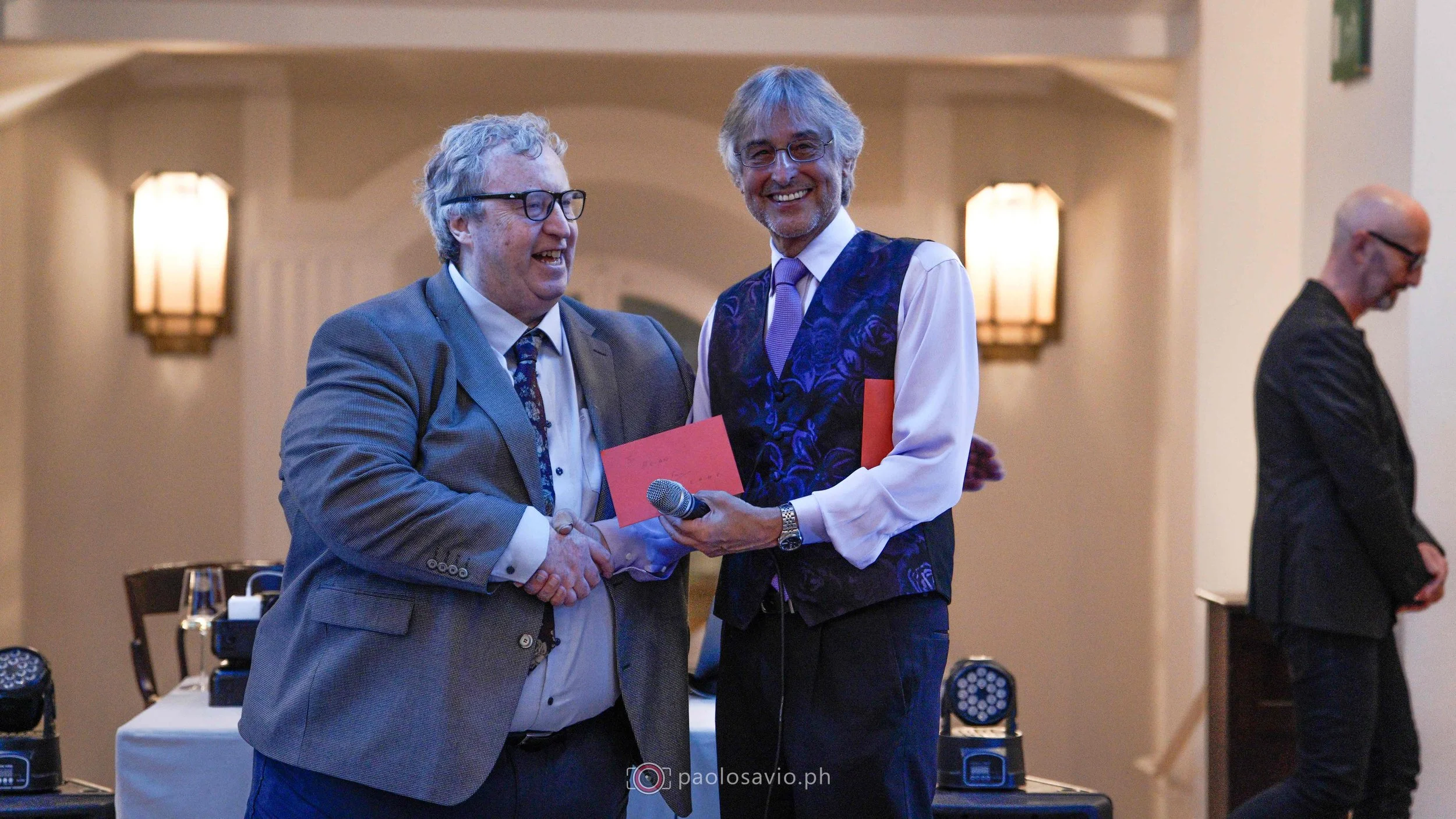The 2025 EMHF AGM and three trainers who topped their respective national championship tables for the first time last year
Last month we published tables of reigning National Trainers’ and Jockeys’ Champions. Here, we get to know two trainers who have become, for the first time, champions in their respective countries.
In Norway, Cathrine Erichsen finally broke a thirteen-year stranglehold which Niels Petersen had held on the title, while in Belgium, it was Nadine Verheyen who prevailed.
CATHRINE ERICHSEN
A lot has happened in Cathrine Erichsen’s career since we profiled her in our October - December issue back in 2019.
For Erichsen, a national rider’s title preceded her entry into the training ranks. “My journey with Thoroughbred horses began when I was introduced to them by some of my friends in secondary school, around the age of 13 or 14. I was instantly captivated by these beautiful creatures and fell in love with them. One of the most memorable moments of my life was riding in my first race at the age of 15; it was an exhilarating experience that gave me a tremendous sense of accomplishment. The following year, in 1986, I achieved my goal of becoming an amateur champion jockey”.
Erichsen’s career change to training was made at the tender age of 24. “When I first obtained my trainer's license, I set a five-year plan with the intention of eventually returning to my college studies in economics and marketing. However, here we are, nearly 30 years later!
“Reflecting on my journey as a trainer, I recognise that it has been quite challenging, particularly as a woman in this field. However, I feel privileged to have received strong support from my owners and to work alongside a reliable and competent team. Their belief in me and their hard work have been crucial to my success. I have always taken a hands-on approach, personally riding my horses, which has been both a healthy and educational experience. I have also been fortunate to meet many friendly people and wonderful horses along the way. Additionally, I've had the opportunity to travel extensively, which has enriched my journey. While this path has proven to be more challenging than I initially expected, I could not imagine my life without it”.
With Øvrevoll being the country’s sole gallop track, Norwegian-based trainers inevitably compete their horses in neighbouring countries, but Erichsen’s foreign forays have extended beyond Sweden and Denmark.
“Every year, I send my horses to compete in races in other Scandinavian countries, and I have also sent them to Germany, France, and Britain. I have won four Derby races and hope to achieve the same success in Sweden. I sent Albaran to Germany for the Hansa Preis, a Group 2 race, where he finished second. He then set a track record in the Scandinavian Open, a Group 3 race in Denmark, where he faced international competitors and won in a photo finish against Yoanna's Pace, the Group 1 St. Leger winner from England. His track record time still stands. Later, in 1999, we participated in the Prix de l'Arc de Triomphe, where we didn’t win but competed against some of the best horses in the world. All the big names were there. That same year, Albaran also won the Stockholm Cup in Sweden and the Scandinavian Open in Denmark”.
Raids to Britain have met with notable success, with Easy Road, winning a Listed race at Doncaster in October 2015 and returning to Ascot a year later to win another Listed event, with the likes of Medicean Man and Sole Power in behind.
“Those trips are, without a doubt, some of the true highlights of my career. Not only did I take the bold step to travel to Britain, but I also succeeded, marking one of the most significant events I have ever experienced. I will never forget when the world renowned jockey, William Buick, mentioned how incredible it was for him to win a race on his new home turf with a horse trained in Norway. Being a guest on the Morning Line show and having the chance to express my joy repeatedly is a memory that many, including myself, will cherish. I vividly remember arriving at Ascot with Easy Road and seeing the Racing Post create a travel map for all the runners that day. We undoubtedly had the longest journey, traveling for days with several stopovers!”
The best horse to have been through Erichsen’s hands was probably, Duca Di Como, a predominantly dirt horse whom Erichsen sent over for the Wokingham two years ago and for whom the Breeders' Cup was once on the cards.
“I bought Duca di Como unseen at the Breeze-Up Sales when he was a two-year-old, based on advice from one of my contacts. Initially, my impression of him was somewhat disappointing - until I saw him working. That’s when I realised that this horse had real potential. He was quite immature and inexperienced, so I chose to wait until he turned three to start him in races. Once we began, he showcased exactly what I had anticipated. I had aspirations for him to compete in the Breeders' Cup. It's still frustrating to think about the opportunity we had to attend the Breeders' Cup with Duca when he was at his best, and we chose not to take that risk. The Wokingham marked the end of Duca's career. He had, quite literally, won everything in Scandinavia multiple times, so trying something new was an exciting challenge. He performed exceptionally well on both grass and dirt, and he still holds track records for milers in Scandinavia”.
So how, after decades of persistence, did Erichsen finally achieve her breakthrough trainers’ title?
“Although my superstar, Duca di Como, was not in his best shape, the rest of my horses stepped up and truly delivered. I had strong performers across all categories, from handicappers to homebreds and quality horses. Each one of them rose to the occasion, even though my horse material is smaller and simpler.
“Racing is a minor sport in Norway, which means that owners do not often reach out to you on their own. As a trainer, connecting with owners is a crucial part of my job, and while it can be time-consuming, it is also quite exciting. My background in college studies in economics and marketing often proves beneficial in this aspect of my work”.
Like most horses in training in Norway, Erichsen’s are trained on the track. Of course, the Norwegian climate poses challenges, but, also, according to Erichsen, offers unique advantages, too. “Based on my experience, training horses during the winter in the beautiful snow that is common in Norway is highly beneficial. Snow can be prepared in various ways to create an excellent footing for the horses. It cools their legs and has a natural give, making it gentle on their joints. In short, snow is advantageous for horses”.
And which jockeys, racetracks and fellow trainers does she hold in the highest esteem?
“Aiden O’Brian is the trainer I admire the most.
“As for racecourses, among the ones I have seen, Ascot and Longchamp stand out the most. I have been fortunate to attend many race meetings around the world, including the Saudi Cup, the Royal Ascot, the German Derby, and various events in Dubai. Unfortunately, I have not yet experienced the Breeders' Cup. However, if I had to choose my favourite among the events I have attended, it would be the Royal Ascot.
“William Buick is undoubtedly the best jockey in the world. I remember when he first arrived at Øvrevoll, so small and eager to ride; all the horses galloped away with him. His tremendous success, competence, and skill make me proud to be Norwegian. The day William won the race for me at Ascot still remains the most unforgettable moment of my career”.
NADINE VERHEYEN
As with Erichsen, Nadine Verheyen’s maiden championship is the culmination of a decades-long training career. In 2005, she secured a licence as a private trainer for the Molenhof Stable, an extensive concern, situated 30kms south-east of Antwerp, whose main focus is on breeding and developing Belgian Warmbloods, primarily for show jumping. She did this with her partner, Wim Van de Poel, whom she had met in 1991, when Wim was an Amateur jockey – her first encounter with Thoroughbreds. Later, they were to become owners and raced at the now closed Flat track at Sterrebeek.
Seeding her fledgling training operation with purchases of horses-in-training from both BBAG and Tattersalls, they also bred Thoroughbreds for a period of time. “Some of the young horses were entrusted to trainer Andreas Löwe and his team in Cologne (Germany)”, she explains.” We had an excellent working relationship with him. There was always mutual respect and a strong focus on the wellbeing of the horses. We learned a great deal from him. And learning never stops, we firmly believe that”.
Verheyen is still based at Molenhof. “Today, we have ideal facilities: stables, meadows, paddocks, a covered horse walker, an indoor arena, and a 1600-meter training track”.
However, due to time constraints, journeys to compete at German and French tracks have diminished, as have their number of horses in training. Which makes last year’s success all the more remarkable. “We owe this above all to the horses, who have remained fit and injury-free, and to a fantastic team that is available day and night. A passionate team, united in pursuit of the same goal and deeply connected to the horses, is the key to success.
“Being 100% professional in the flat racing sport in Belgium is not financially viable today. It is, however, a real asset that Belgian racing still has international value and that we continue to have an all-weather track in Mons and beautiful turf racecourses in Ostend and Waregem”.
Verheyen retains a deep admiration for Lowe, although he is no longer active as a trainer. “He found the perfect balance between caring for the horses, his staff and the owners. Andreas Löwe achieved impressive results, sometimes with rather modest horses, but he always acted with great passion and consistently maintained his belief and trust”.
As for jockeys, “Terence Hellier is definitely one of our favourites. He handles pressure well and has an excellent feel for his horses. It's a pity he no longer holds a jockey license.
We also have tremendous admiration for our Belgian top jockey in France, Christophe Soumillon, not only as a rider but also as a passionate mentor for future jockeys. It's truly impressive how dedicated he is” – a reference to Soumillon’s Pony Academy.
“We are fortunate to have experienced many memorable race days, over the years. The German Baden-Baden (Iffezheim) meetings were our holiday destination for many years. We took as many horses as possible and spent ten days racing at a beautiful racecourse. It was both a vacation and hard work, but we enjoyed every moment of it. In 2009 we enjoyed 4 wins with 2 horses and, two years later, we topped this with 5 wins.
“We also enjoyed numerous victories with Lady Magda and our female amateur jockey Karen Dieltjens, who gave us incredible goosebumps moments both in Ostend and at Waregem Koerse. The highlight of this combination came in 2022, with 5 starts and 5 wins, including the Prix de Prince Rose in Ostend and the Prix Bingoal St Leger in Waregem, which we won for the second year in a row. In 2023 a long break was necessary for Lady Magda, but in 2024 she won the Prix de Prince Rose in Ostend again, which is a unique achievement. No horse has ever won the Prix de Prince Rose twice”.
A third victory might even be on the cards on August 4th for Verheyen’s stable star, who now races in the colours of her amateur rider, Karen Dieltjens. “We hope to participate again this year with Lady Magda and Karen Dieltjens in the Prix de Prince Rose in Ostend and the Prix Bingoal St Leger in Waregem.”
KAVANAGH PRESIDES OVER FINAL EMHF MEETING
At 1.30pm on June 1st 2010 the founding meeting of the European and Mediterranean Horseracing Federation took place in Stockholm, Sweden. The Chair that day, as for the next fifteen years, was Brian Kavanagh, then CEO of Horse Racing Ireland. At 5.00pm on Friday, May 3rd 2025, in Merano, Italy, Kavanagh – now CEO of The Curragh racecourse – drew to a close the first day of this year’s EMHF General Assembly, which was to be his final meeting in charge of the Federation.
Italy's most northerly racecourse, Merano Maia, sits against a backdrop of towering, snow-capped Alpine mountains. Just south of the Austrian border, this area of South Tyrol has a vibe all its own, where German is at least as widely used as Italian. Italy’s premier jumps track, home each September to the Gran Premio Merano, must rank among the world’s most beautifully-situated and several of the delegates revealed that it was on their ‘bucket-list’ of courses to visit.
The meeting saw the re-election of Poland’s Jakub Kasprzak to its nine-strong Executive Council. Sadly, Lebanon’s Associate Membership was suspended, due to the absence of Thoroughbred racing there in recent years. The group received a presentation from the EMHF’s Political Advisor, Cathy McGlynn, on the status of the EU review of its legislation relating to animal welfare in transport and on ongoing efforts to secure free movement for Thoroughbreds being moved for breeding and sales purposes. Commitments were made to hold EMHF Seminars, later this year, on the subjects of Handicapping and Co-Ownership. The General Assembly had been immediately preceded by the second EuroMed Stewards’ Conference, again organised by the British Horseracing Authority.
There was a strong and varied contingent of representatives of relevant commercial organisations, many making return visits, and presentations were made by LockCon, manufacturers of doping control kits, MYLAPS (automated timing technology), Pegasus (horse nutrition and transport) and Equine MediRecord (anti-doping and horse welfare systems) as well as from the International Representative of the Organization of Racing Investigators.
For the first time, much of the second day of business was set aside for group strategic discussions, in which members discussed what they would like to see from the Federation over forthcoming years, as we enter a new era of our development under new Chair, France Galop’s Henri Pouret. These ideas will be considered further by our Executive Council at its next meeting, in Navan, Ireland, in November, before a plan for the future is presented to next year’s General Assembly.
Our Italian hosts, the Ministry of Agriculture and the executive of Maia Racecourse, then treated the group to a dinner in the Restaurant in the Kursaal, the grand hall within the Kurhaus, a famous architectural landmark in the city, at which a presentation was made to Kavanagh in reflection of his enormous contribution to the Federation.
We close this piece with some reflections from our recently departed Chair.
Q: How would you characterise the development of the EMHF, since its inception fifteen years ago?
It has been very satisfying to see the development of the federation over recent years into more than just a networking body between large and small racing jurisdictions in the region (although that is still a very important function). The participation at a senior level from all member countries is a big benefit and has encouraged a structured and consistent approach to areas such as horse welfare, doping control, race planning and grading through the region. The federation plays an active role within the ifha and through its contacts with other industry bodies is working to assist eu policy development in critical areas such as horse transport. The work of paull khan as secretary general is critical in pulling all of this together.
Q: You also held high office – as Vice-Chair for many years – of the global body, the International Federation of Horseracing Authorities. What do you feel are the additional benefits that the regional federations, like the EMHF and Asian Racing Federation, bring to the sport?
I think they are essential to filter IFHA policy decisions down to individual member countries and to ensure a consistent approach both regionally and globally. They are also very important channels to ensure that specific regional issues are properly articulated and addressed by the senior international racing body.
Q: You must hold many memories of visits to EMHF member countries for your annual General Assembly and Executive Council Meetings. Which are the most vivid?
It has been a privilege to visit so many wonderful racing venues throughout the european and mediterranean region and to see at first hand the high quality and wonderful variety of racecourses within the region. It would be wrong to single any one out, but my abiding memory will be of the wonderful people working to promote horse racing throughout the region and the firm and lasting friendships made.
Next year, the EMHF ‘roadshow’ rolls into Porto. Portugal has kindly offered to host what will be the first EMHF meeting in that country. It will take place on July 11th and 12th 2026.







